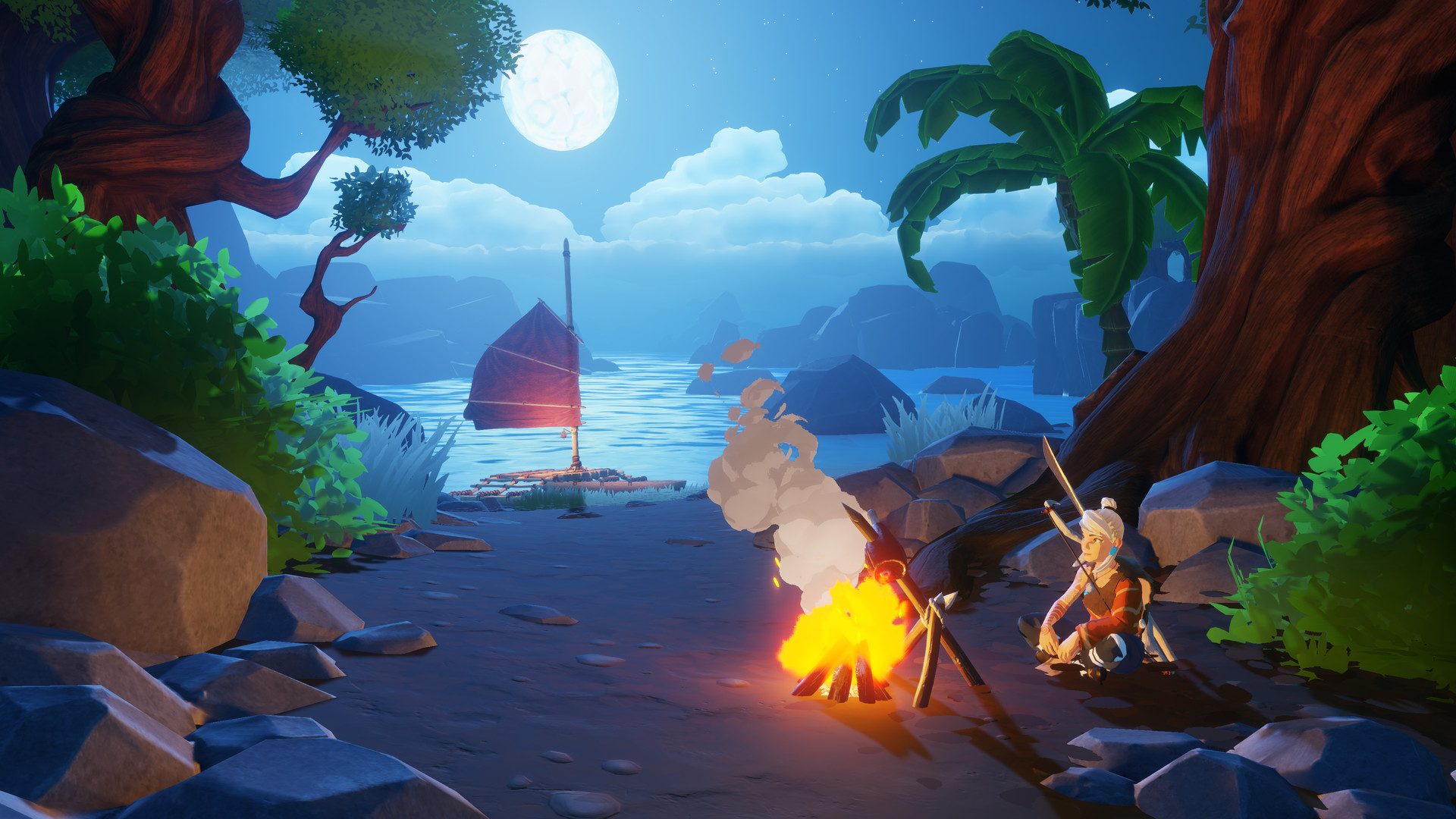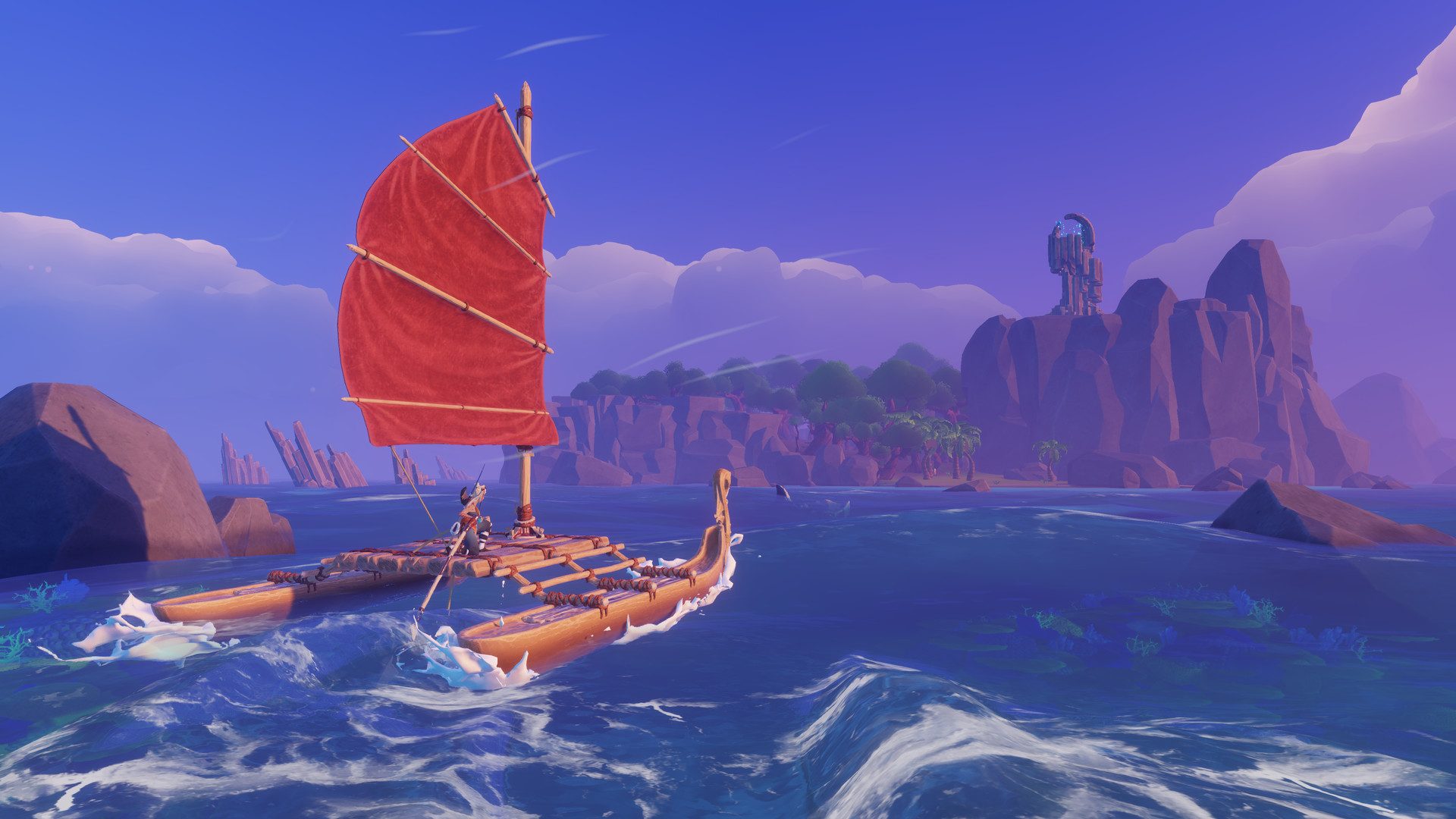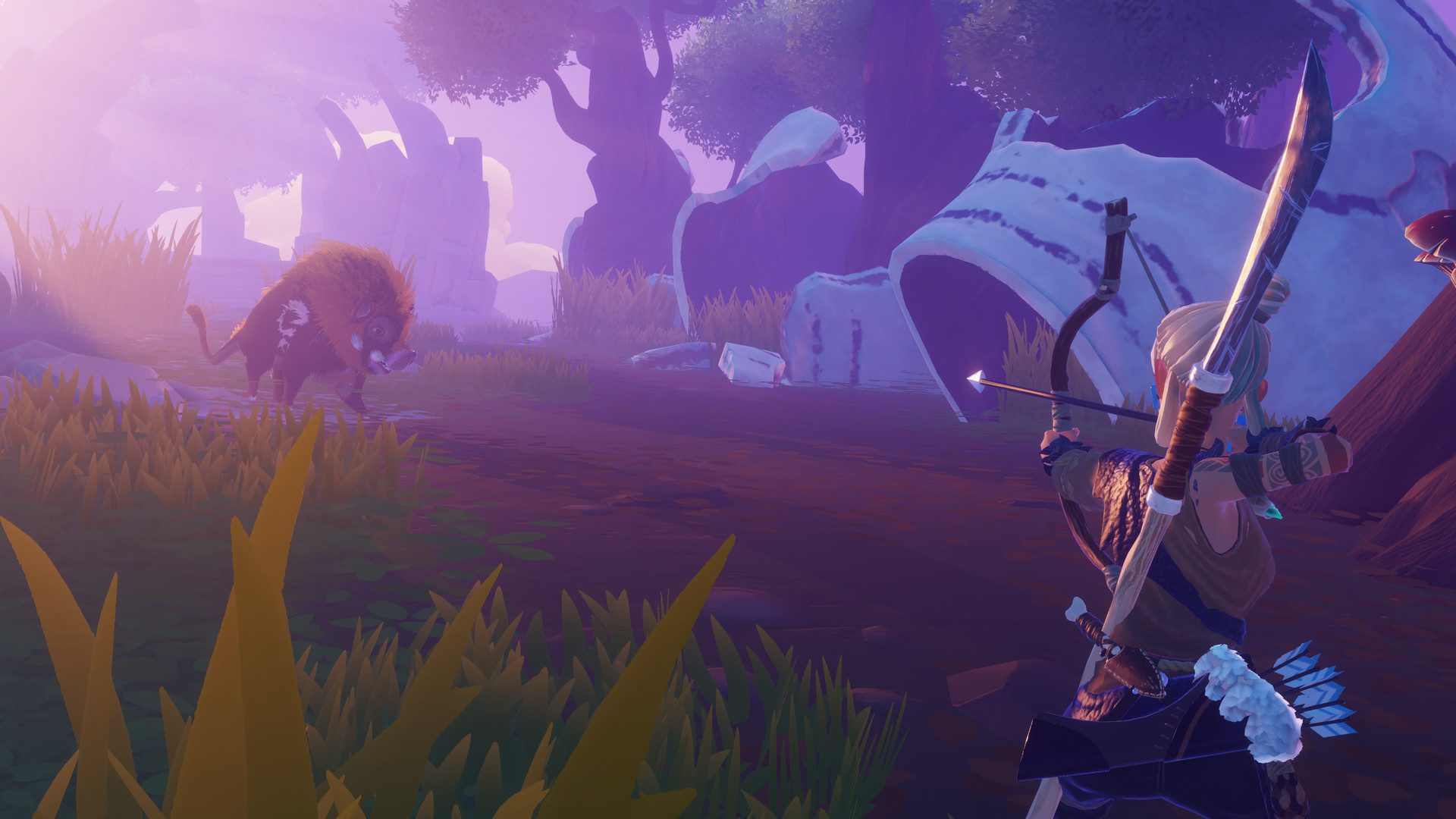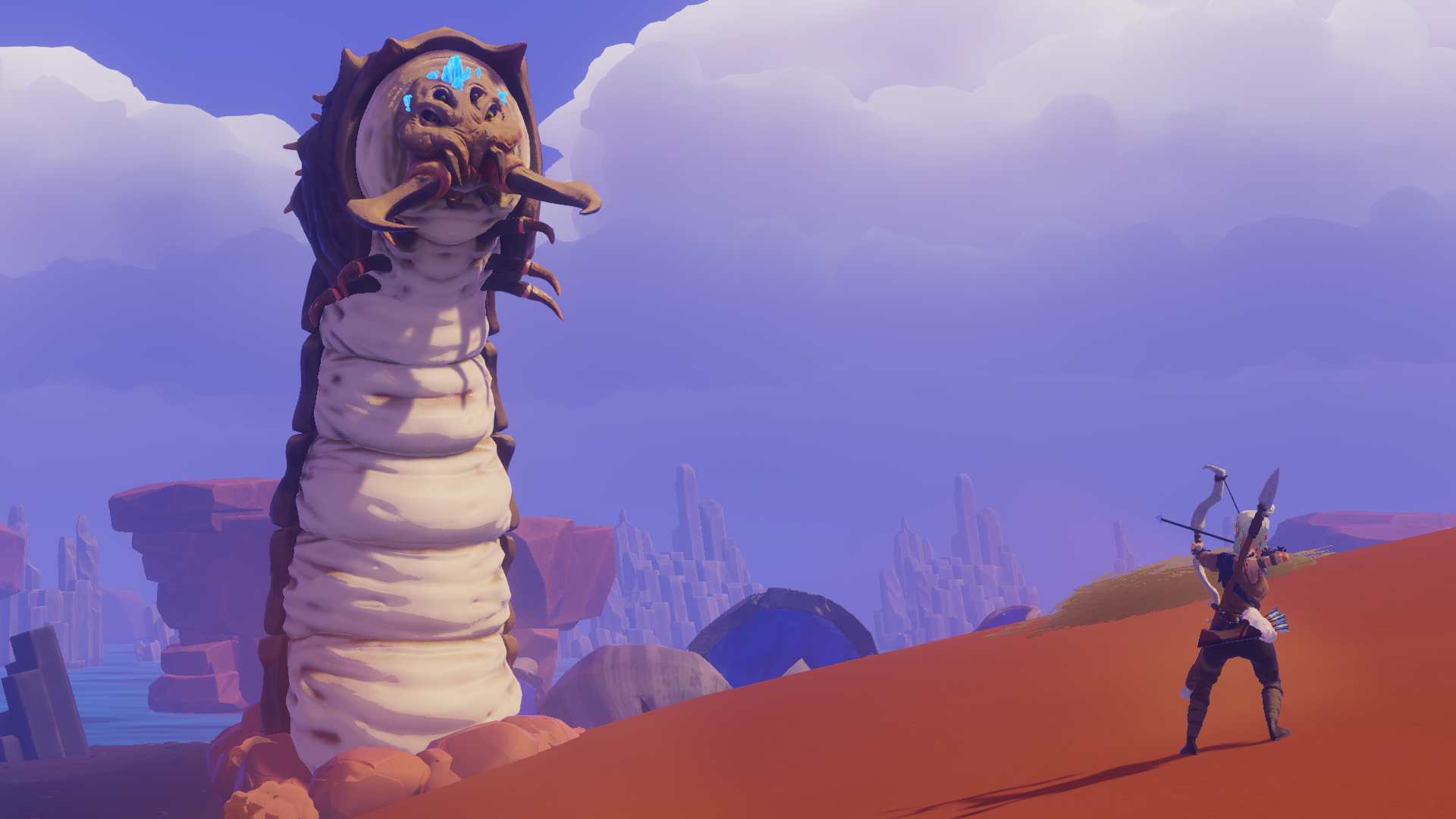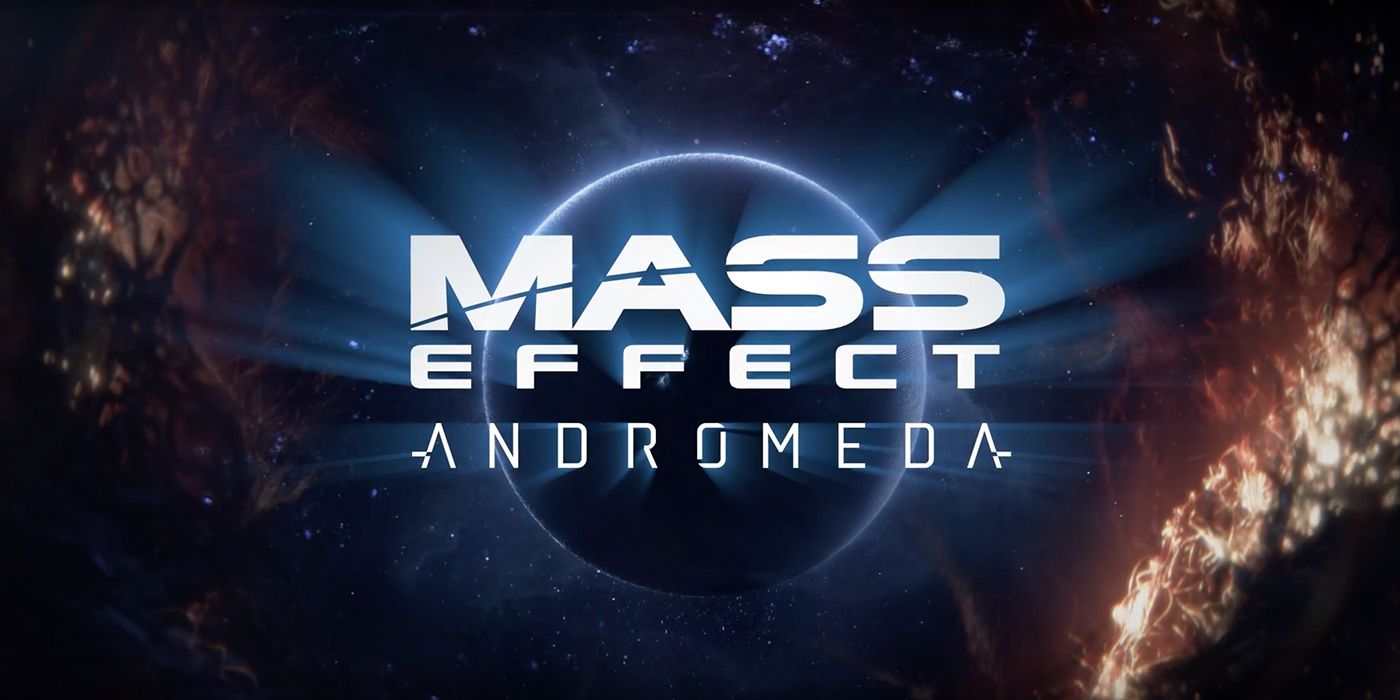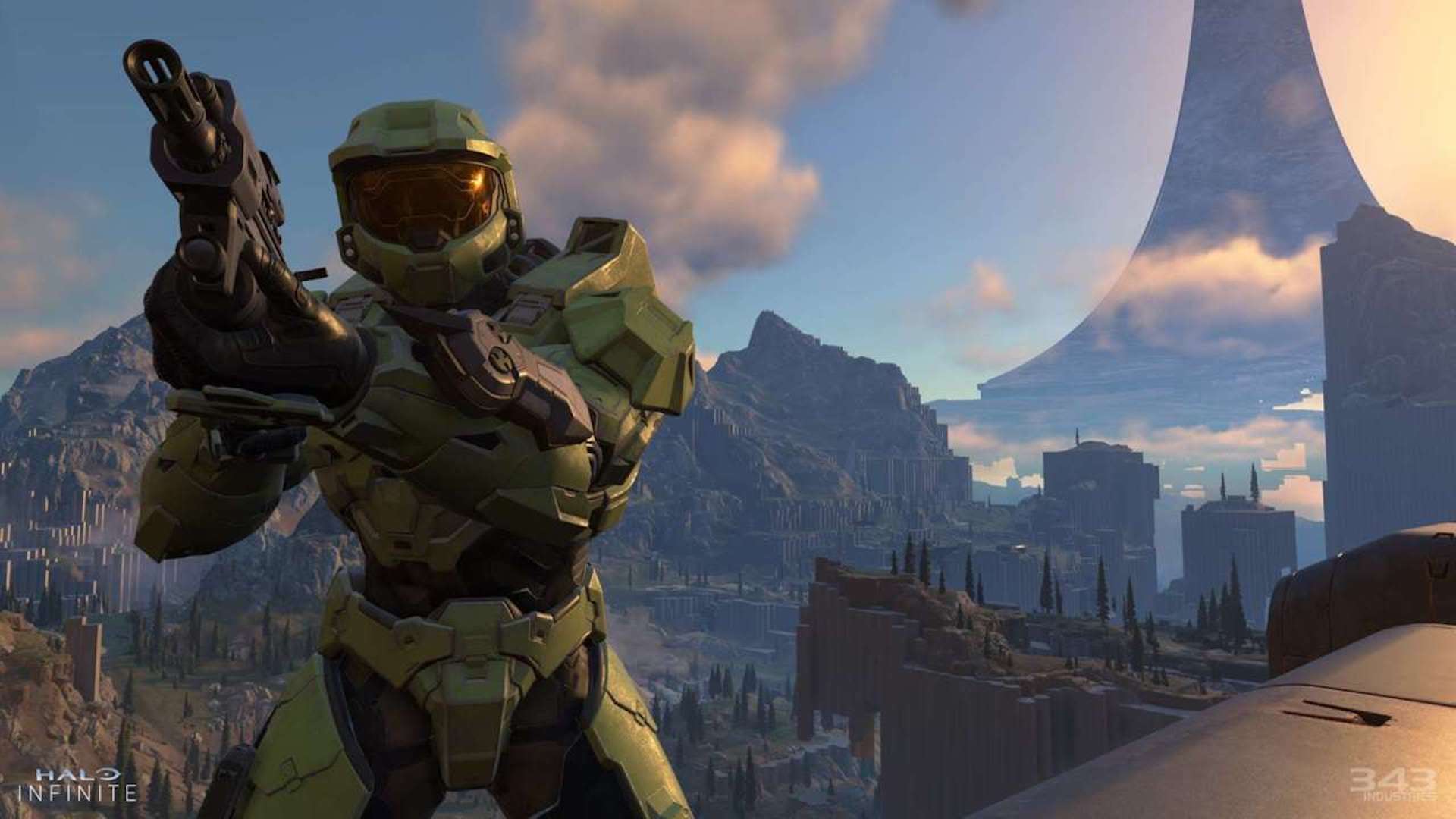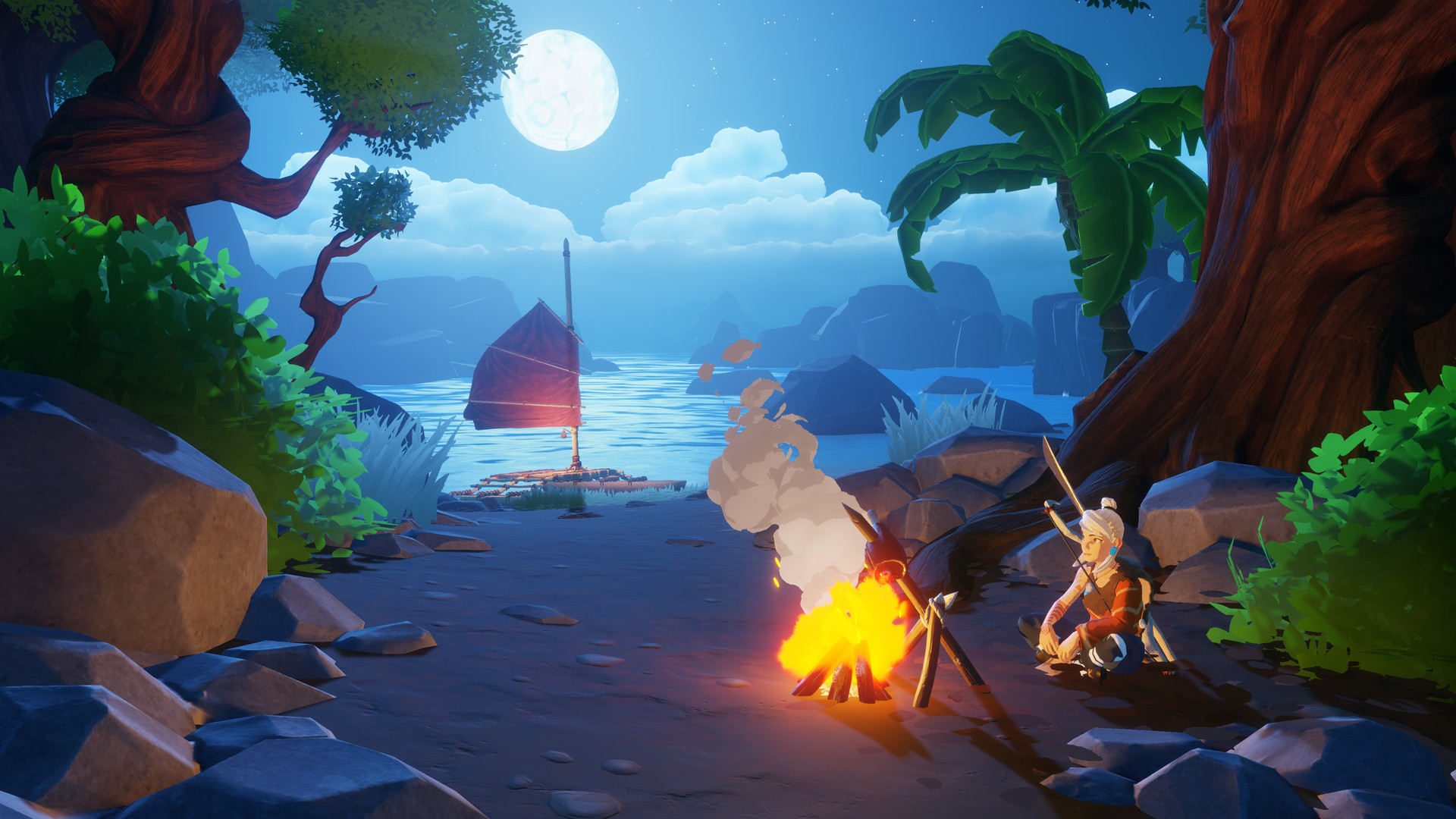
I don’t usually enjoy survival games, but Windbound is a game that I’ve been curious about for a while. It has a lot of interesting ideas- its focus on sailing, its promise of a mysterious open world, its wordless and mystical approach to storytelling, and more all combine to make it sound like a game that in spite of very much being a survival-focused experience, will offer something different. And it does offer something different- and there are moments when it works, and works really well. But those moments are not nearly as frequent as I had hoped, and are weighed down by inconsistencies and larger issues that drag down the whole experience.
In Windbound, you play as Kara, a young sailor who gets separated from her tribe when a furious storm wrecks her ship and sends her hurtling away. She wakes up alone and unarmed, finding herself in a strange, mysterious archipelago, where she must battle against the elements and scavenge her way to survival, as she looks for a way back home and uncovers the secrets of this strange place she finds herself in.
There is a very clear narrative focus here, which is unusual for a survival game, and Windbound tells its story through very indirect means. There are no long cutscenes, no heavy exposition, no prolonged conversations. The story is instead told through more visual means, with murals on walls, with text descriptions of items, with wordless cinematics. It’s a very interesting approach to storytelling, and something that I personally want to see far more of in games, and it’s one of the few areas where I find Windbound to be almost completely successful in what it sets out to do. The aura of mystery the game builds up and the isolated and lonely atmosphere that permeates the entire experience will stay with me for some time to come.
“There are moments when Windbound works, and works really well. But those moments are not nearly as frequent as I had hoped, and are weighed down by inconsistencies and larger issues that drag down the whole experience.”
But sailing is really the heart and soul of Windbound. Each chapter sees you travelling across an archipelago, hopping from one island to the next, and the way to do that, of course, is with a boat. You start out with something very simplistic – nothing more than a raft made of grass reeds tied together and a paddle to row and steer with – but as you progress, gain access to more materials, and learn new crafting recipes, you’re able to build much more impressive boats, with multiple decks, sails, armour plating, spikes, and what have you.
Building up your boat is easily the most satisfying thing in the entire game (and losing all of that progress when you die is, in turn, infuriating- more on this in a bit), but actually sailing that boat it is a bit inconsistent. In the early goings, when you’re only using a paddle to steer and row, there isn’t much to it, but as you progress and actually start sailing – not rowing – things get a bit tricky. That’s because you rely almost entirely on the wind- which sounds great on paper, but can lead to moments of frustration during gameplay. There were several instances when I simply couldn’t go in the direction I wanted – or even leave shore – because the wind was blowing so furiously in the exact opposite direction. And sure, that’s realistic, but it’s too punishing, to the extent that it actively gets in the way of enjoyment.
Other than sailing, the bulk of the game is focused on mechanics and loops that fans of the survival genre will be very familiar with. There is a stamina meter that you have to manage constantly by feeding yourself, and when it gets to critical levels, it starts affecting your health as well. To keep that in check, you have to forage for food and berries, or hunt animals so that you can cook some meat for yourself. Collecting resources in the environment – from rocks to grass to sticks to clay to bamboo to what have you – is also crucial to keep getting access to new recipes to craft new items and weapons with.
“Building up your boat is easily the most satisfying thing in the entire game.”
That all sounds fairly ordinary for a survival game, but the hunger meter I mentioned is far too much of a hassle. In any other survival game, managing a meter that’s constantly being depleted wouldn’t be something that would even bear mentioning, but Windbound is a game that clearly wants you to explore. It encourages that through its art design, through its underlying lore, and even through the rewards you get for exploration – such as the occasional shrine that permanently increases your max stamina – but when you have a meter that’s constantly depleting and essentially forcing you to get back on the critical path, it feels like the game is at odds with itself.
There are other aspects that actively discourage exploration as well. I already mentioned the inconsistent sailing, where you’re completely at the mercy of the wind quite a few times, which means going out of your way to a small island in the distance when the wind is furiously pushing you in the opposite direction just might not seem worth the risk. Then there’s the fact that any food you bring along with yourself – whether cooked or uncooked – degrades pretty quickly, which means hoarding large quantities before setting out on a long journey is never a viable option.
It doesn’t help that the means through which you gather food are also not very reliable. There are some islands where you might find the odd berries or mushrooms, but those don’t restore a lot of your stamina. The best way to do that is by eating meat- but hunting for it is a nightmare, because combat in Windbound is rough. The camera is unreliable, the controls are clunky, and movement and hit detection are sluggish. It’s a shame, because the visual design of most (if not all) of the creatures you encounter is vividly imaginative, and at first glance, you want to fight them- but it’s just too risky, and they end up feeling like a waste.
“Combat in Windbound is rough. The camera is unreliable, the controls are clunky, and movement and hit detection are sluggish.”
It’s risky because of how devastatingly punishing death is in Windbound. On Survival difficulty – which is the difficulty level the developers recommend for the game – every time you die, you lose everything in your inventory that isn’t in your bag (and your bag can’t hold an awful lot), you lose your boat and all the improvements you’ve made to it, and worst of all, you’re knocked back all the way back to the beginning of the first chapter. Story difficulty is much more forgiving- you still lose your boat upon death, but you get to keep all the items in your inventory, and you’re only sent back to the beginning of whatever chapter you’re on. I’m sure hardcore survival enthusiasts will find Survival difficulty alluring. I personally enjoyed the game a lot more when I was playing it on Story difficulty.
Another big issue that Windbound struggles with is its structure. You progress through each chapter of the game by passing through a gateway, and to activate the gateway, you have to activate towers scattered across that chapter’s area. It’s a simplistic structure – as simplistic as it sounds, really – and goes hand-in-hand with several issues. The first is the fact that this simple structure, combined with the overbearing and demanding nature of its stamina management, meant that more often than not, I was just ignoring all the activities as much as I could in order to beeline it to the towers, active them, and then pass through the gateway at the end to move on to the next chapter. It did not make for a very enjoyable experience.
The second issue is that the game gets very repetitive because of this. Each chapter has you doing the same thing, and while it’s true that new creatures, new materials, new crafting recipes, and new items and upgrades do try to keep things fresh, they’re all ultimately fighting a losing battle. It all just feels too monotonous. It doesn’t help either that due to Windbound’s procedural generation of all areas, there isn’t much visual variety either. After a while, all the areas just start looking the same, which meant there wasn’t even ever the prospect of a breathtaking new environment on the horizon to stave off that feeling of repetition.
“This is a perfect example of a game that looks great in touched-up screenshots, but simply falls apart when seen in motion.”
I also feel like I have to talk about the visuals- and how disappointed I am in them. I’m a big fan of the stylized water colour art style that has become so popular in the industry of late, especially after Breath of the Wild. It’s the art style that Windbound employs as well- but it has to be done right, which is definitely not the case here. Windbound’s visuals lack the detail and crispness that are required to make those visuals as eye-popping as they should be, and things here just look too muddy, and at times just downright ugly. This is a perfect example of a game that looks great in touched-up screenshots, but simply falls apart when seen in motion.
I don’t hate Windbound, to be clear. I think there are absolutely things it sets out to do that it does well, and there are still other ones I can at least give it props for trying, even if I don’t think they stick the landing well. However, that very fact – that I am actively trying to root for the game – is what makes its litany of shortcomings and flaws so much more frustrating. There’s some good ideas in here, and occasionally when it comes together, it feels great. But most of the game is spent with its various systems working against one another, and in the process, penalizing the player. Most of it is spent in areas that start to blend together mechanically, and more tragically, visually. And I think those visuals and mechanics of this game are perhaps the perfect encapsulation of what it is – something that feels so great in concept, but the minute you actually see it in action, it becomes a confused, convoluted mess.
This game was reviewed on the PlayStation 4.
